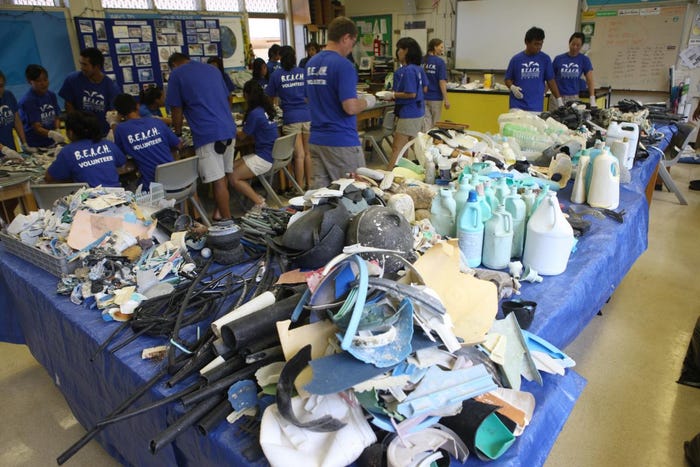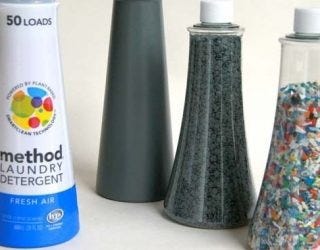A “method” to help solve ocean waste madness
No one likes a trashy beach.Simply mentioning the Great Pacific Garbage Patch and it likely gives chills to those around you. After all, the swirling vortex of plastic bags, bottles and other debris, a landfill some say is twice the size of Texas, is a dilemma for consumers, the industry, and our planet alike.
July 23, 2012
No one likes a trashy beach.
Simply mentioning the Great Pacific Garbage Patch and it likely gives chills to those around you. After all, the swirling vortex of plastic bags, bottles and other debris, a landfill some say is twice the size of Texas, is a dilemma for consumers, the industry, and our planet alike.
As we covered back in May, scientists from Scripps Institute of Oceanography reported the amount of plastic debris in this part of the Pacific Ocean has grown 100-fold in the past 40 years.
"Plastics don't belong in the ocean," Keith Christman, managing director of plastics markets for the American Chemistry Council, told me at the time. "This is clearly a shared responsibility for all members as a society, it takes all of us to work together."
It's safe to say ocean waste is an enormous problem, and the problem isn't going away anytime soon. However, household and personal care company Method is working to turn the waste into a packaging solution.
In a blog article posted in June, the company stated, "As a small soap company, we know we can't clean up the world's oceans, but we can raise awareness about the issue and use our business to demonstrate smart ways of using and reusing the plastics that are already on the planet."
"We think the best way to do that is to prove that solutions exist, even at a small scale," the company wrote. "Later this year, we will be launching a product in the world's first packaging made from a blend of PCR plastic and recovered ocean plastic. Recovered from beaches by method employees, in fact."
Method employees and volunteers from Sustainable Coastlines and the Kokua Hawaii Foundation all participated in a  coastal clean up. Hawaii is situated at the southern edge of the gyre and is susceptible to scrap washing ashore.
coastal clean up. Hawaii is situated at the southern edge of the gyre and is susceptible to scrap washing ashore.
According to an article on Wired.com, the company then recycled some of the recovered plastic to make about 10% of the plastic that is used to produce a plastic soap bottle, which will be released later this year.
This bottle marks the latest push by the company to produce plastic bottles made out of ocean waste. Last year, the company unveiled an initiative to produce bottles made in part from plastic collected from the North Pacific Gyre. The bottles are 100% post-consumer polyethylene, with 25% of the PCR content sourced from the ocean. Method partnered with recycler Envision Plastics on the project, calling the resulting plastic Ocean PCR.
Envision developed an "entirely new process" that allows the company to clean, blend, and remanufacture low-quality material into high-quality plastic.
Method stated the new recycling process bids to engineer Ocean PCR plastic that is the same quality as virgin HDPE  plastic. The process allows the plastic to be cleaned, unwanted contaminants removed completely, blended, and then remanufactured into high quality plastic.
plastic. The process allows the plastic to be cleaned, unwanted contaminants removed completely, blended, and then remanufactured into high quality plastic.
"We've created a usable bottle from ocean plastic and upcycled it into something useful that can be recycled again and again," said Adam Lowry, Method co-founder, in a statement. "Our ultimate goal is to raise awareness that the real solution to plastic pollution lies in reusing and recycling the plastic that's already on the planet."
Some have criticized these bottles as a "gimmick" while others applaud the company for taking the initiative to showcase that recycled plastic can produce a solid packaging solution.
Ocean waste might be a seemingly endless problem, but to initiate real change, maybe all it takes is one small soap company to help clean up some of the mess.
About the Author(s)
You May Also Like


